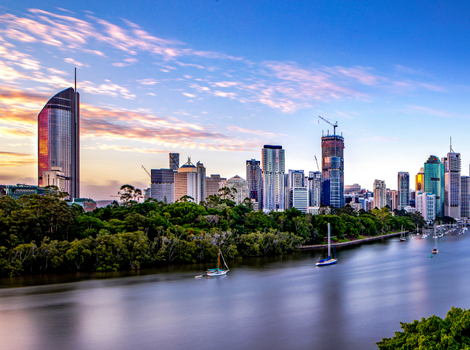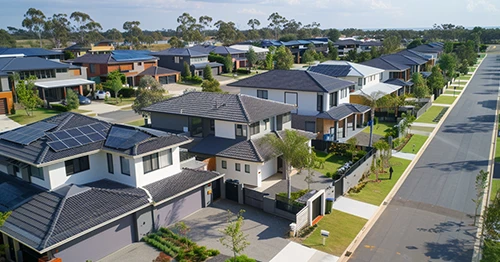Updated: 26 Dec, 2024
It was the fourth straight month of rising housing values. CoreLogic’s Home Value Index went up 1.1% in June, falling slightly off the pace from the 1.2% gain recorded in May.
The market was still 6% below its peak in April 2022, however, the equivalent of dwelling values being $45,771 below that peak average of $786,777.
CoreLogic research director Tim Lawless noted that Sydney is leading the cycle. “Sydney home values increased another 1.7% in June, taking the cumulative recovery since the January trough to 6.7%,” he said. “In dollar terms, Sydney’s median housing values are rising by roughly $4,262 a week.”
Property Market Highlights
Here’s what happened to Australia’s housing market in June.
- A lack of available supply continued to keep upwards pressure on housing values. The flow of new capital city listings was 10% below the previous five-year average.
- The pace of growth across most capital cities eased in June. This could reflect a change in sentiment as interest rates continue to climb higher.
- The combined regionals index recorded month-on-month growth for a fourth consecutive time, taking housing values 1.2% higher than the recent low in February.
- Regional Victoria was the only rest-of-the-state market where quarterly housing values were down – 0.4% in June and 1.3% lower over the quarter.
- Geelong home values were down 0.7%, Ballarat fell 0.3%, and Bendigo fell 0.9%.
- Most regions experienced housing values below their cyclical highs. Hobart’s values declined 12.9% below the record high from May last year.
- Regional NSW recorded the largest drop from the peak, with values down 9.6%, followed by Regional Victoria down 8.4% and Regional Tasmania down 7.2%.
- The number of capital city homes advertised for sale over the four weeks ending 25 June was 20% lower than at the same time last year and 26.4% below the average for this time of year.
- Regional listings tracked 32.9% below the previous five-year average.
- Capital city home sales were 2.1% above the previous five-year average through the June quarter. Regional home sales were 8.9% below average.
- Auction clearance rates across combined capitals were in the 60% range through June.
- The national rental index increased 0.7% in June. The annual trend for growth in rents was recorded at 11.5% across combined capital cities. Annual rent growth for combined regional areas slowed to 4.9%.
- There was a slowdown in rental appreciation. Canberra experienced a 2.8% fall in rents over the 12 months to June.
- Rental vacancy rates rose slightly over recent months but were still below average levels. Vacancy rates across combined capitals rose to 1.1% but were still well below the decade average of 2.8%.
- Some cities did not experience signs of vacancy rates easing. Adelaide recorded the lowest vacancy rate at 0.4%, Perth’s held at 0.7%, and Melbourne’s was at 0.8%.
Australia’s Housing Market Outlook
The forecast for the Australian housing market is still uncertain, amid an expectation of higher interest rates, weaker economic conditions and stretched household balance sheets.
- Lawless predicts there are more rate hikes to come. And he adds, “It’s hard to imagine the recent pace of growth in housing values being sustained while sentiment is close to recessionary lows and the full complement of borrowers are yet to experience the rate hiking cycle in full.”
- The expiration of the low rates for 880,000 fixed-rate borrowers over many months could lead to mortgage arrears continuing to rise as many borrowers’ face higher debt repayments, negative real income growth and higher living costs.
- Higher interest rates could mean tighter serviceability, as borrowers will still be assessed using a three-percentage-point buffer rate. Lenders were cautious, reducing high limits on debt-to-income ratio and high-LVR lending.
- Another risk for housing conditions would be a rise in advertised housing stock. The flow of listings could increase in spring, especially if mortgage stress becomes widespread.
However, some mitigating factors could help Australia’s housing market:
- Net overseas migration is projected to hit 400,000 this financial year, almost 27% higher than the previous record in 2008, which could increase overall housing demand and support property values as long-term migrants transition from renting to buying.
- The approved housing supply pipeline in Australia is at decade lows and is expected to continue to decline, leading to an undersupply of around 175,000 dwellings by 2027, which will probably keep upward pressure on housing prices, the National Housing Finance and Investment Corporation states.
- Despite a projected rise in unemployment to 4.5% by the end of next year, most borrowers should be able to maintain their mortgage repayments, and that cash rate would still be a whole percentage point below the decade’s average.









